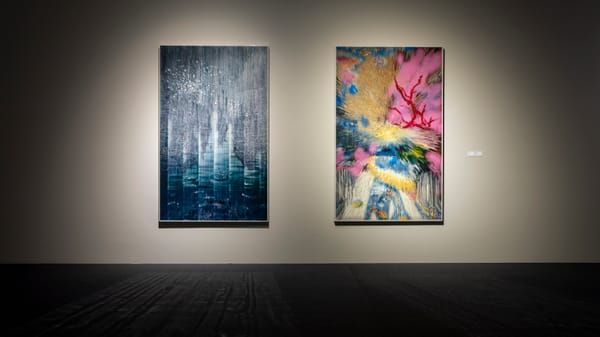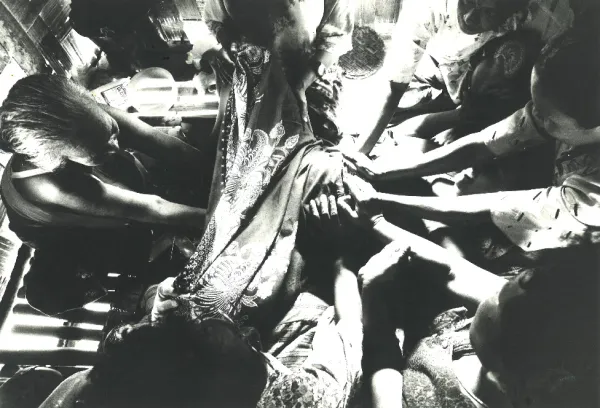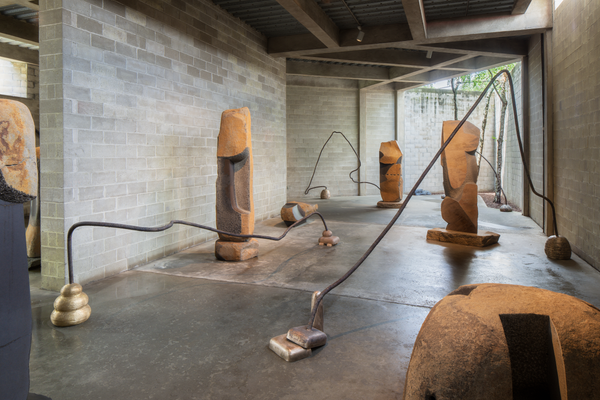Shows
“The Other Face of the Moon”
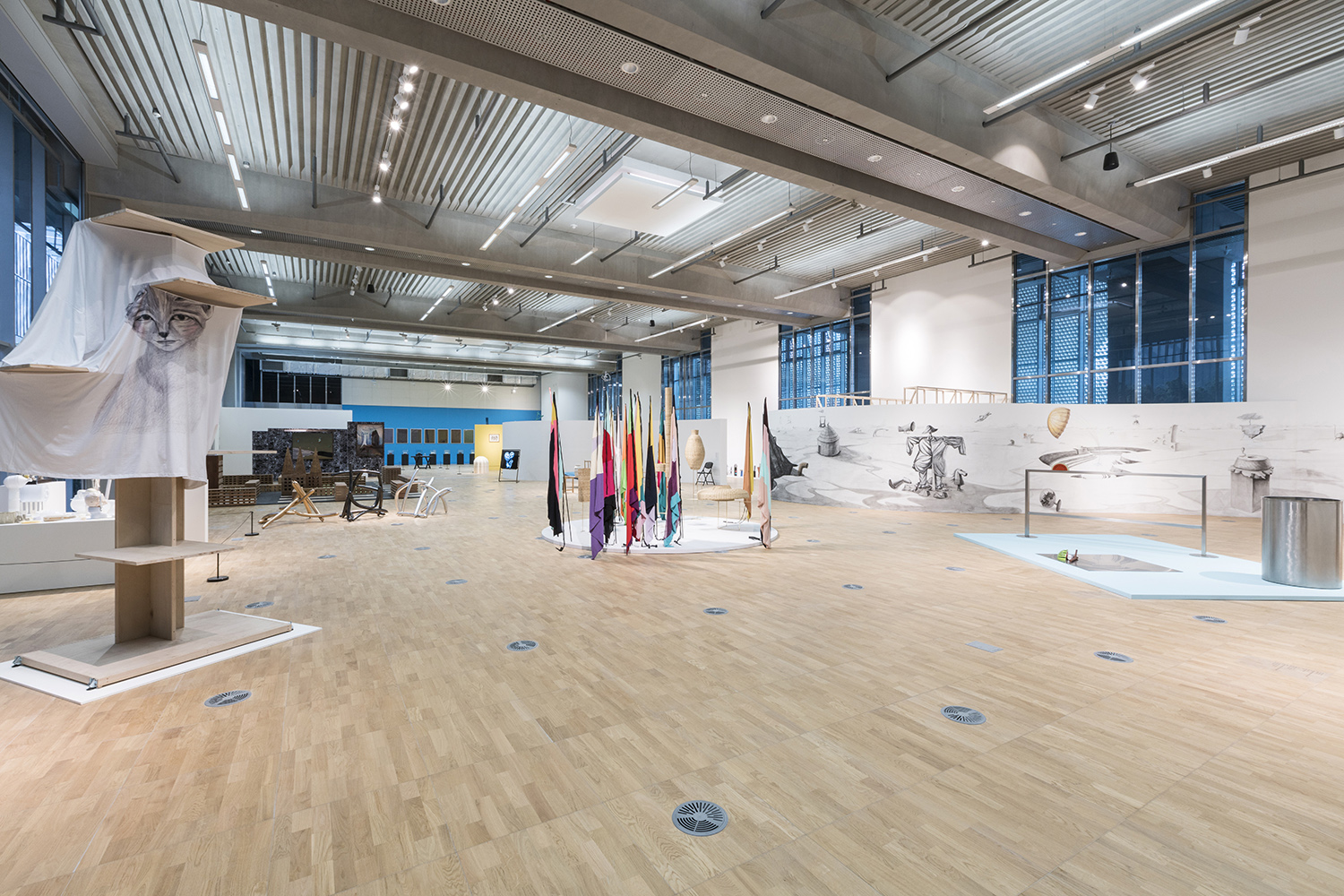

“The Other Face of the Moon,” exhibited at the Asia Culture Center (ACC) in Gwangju in collaboration with the Museum of European and Mediterranean Civilizations (Mucem) in Marseille, borrowed its title from Claude Lévi-Strauss’s book on Japan and the East, in which he suggests that if we want to understand our own culture, we must consider it from another’s point of view. In all, the show included new works by 22 artists and collectives who explored another side of Western modernity and its “value system,” interpreting Mucem’s collection of objects from European and Mediterranean civilizations and folklores from an outsider’s perspective.
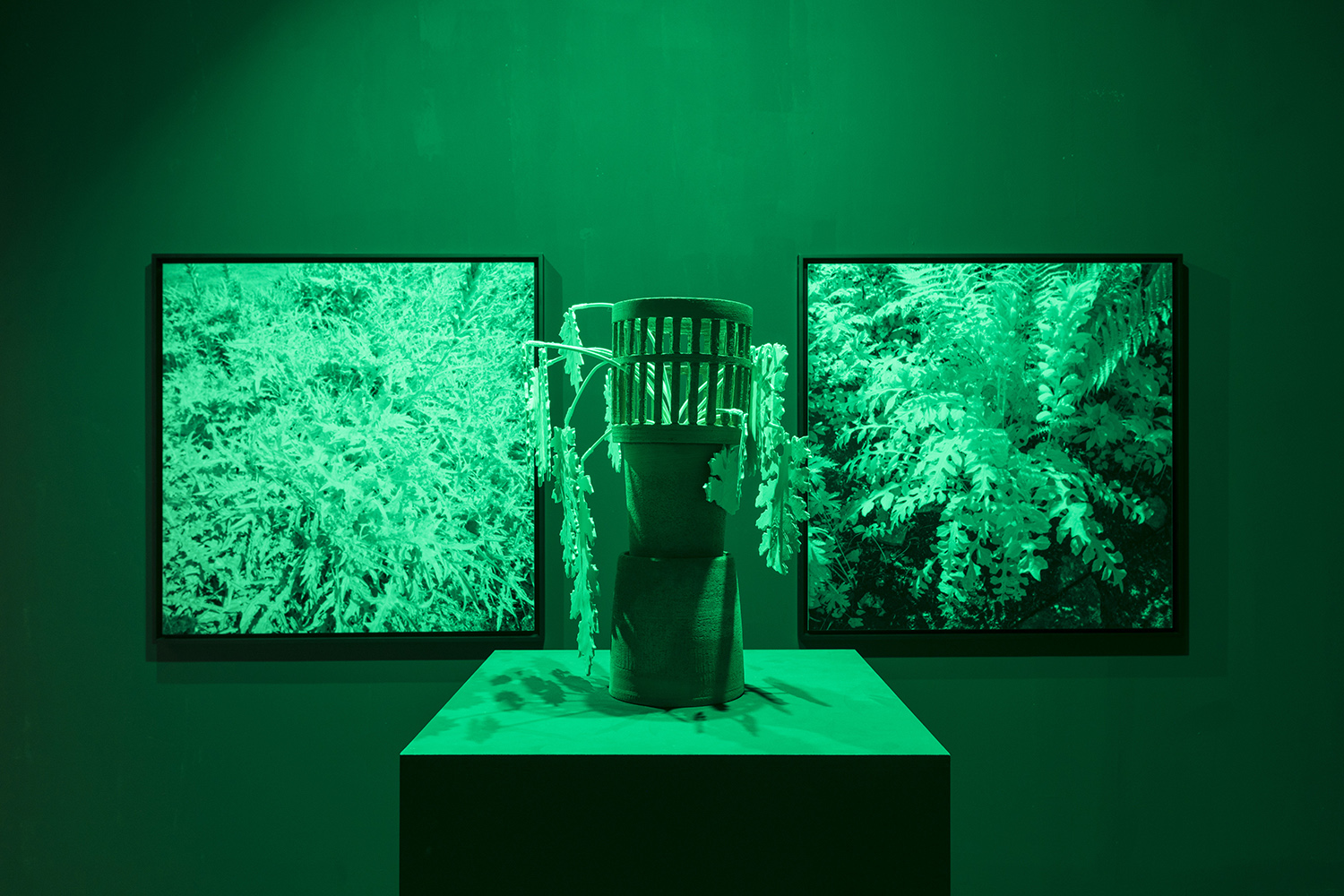
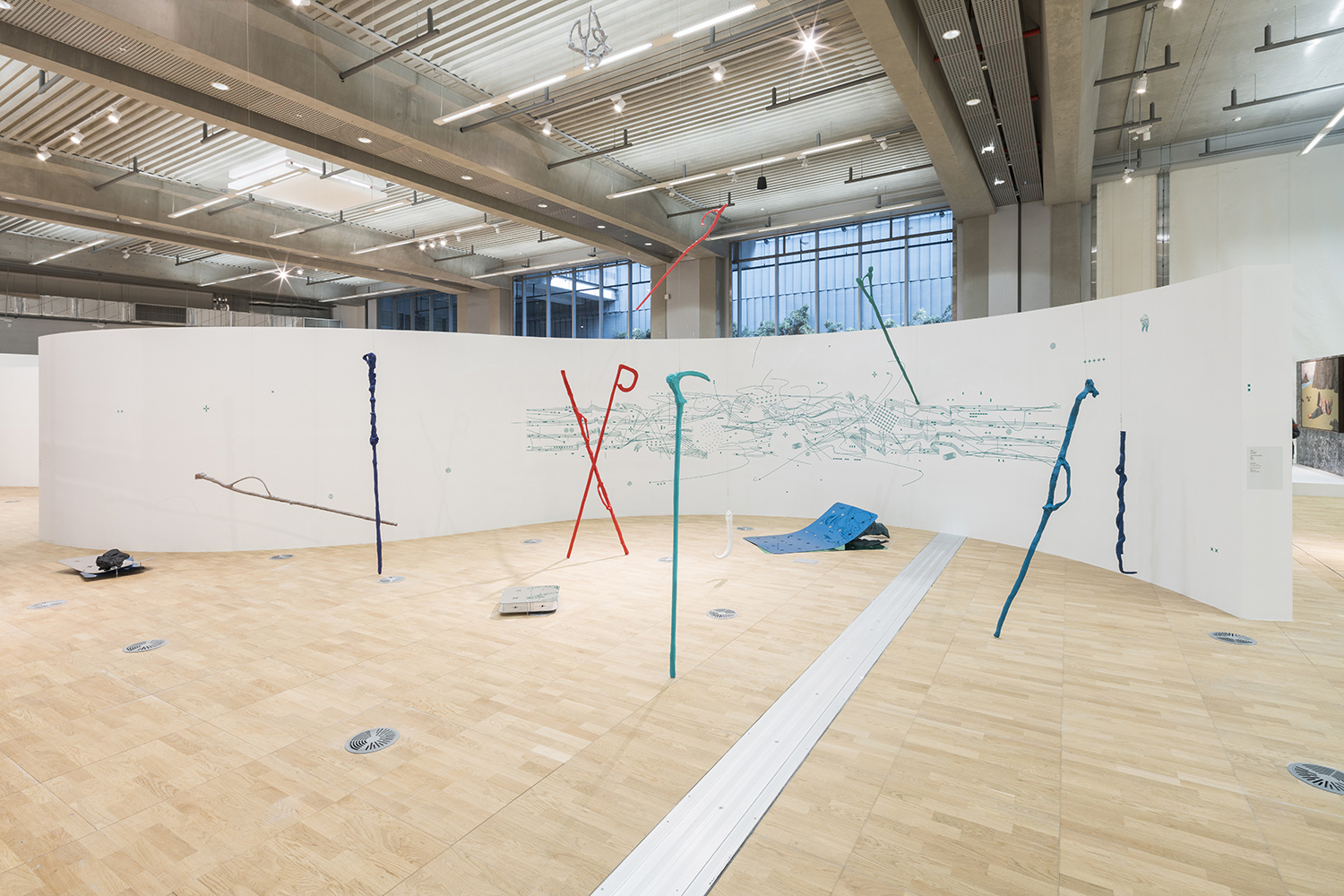
Some artists took the premise of the exhibition as an opportunity to explore deep-set obsessions. Hong Kong-based Trevor Yeung’s installation Garden Acanthus (2017), featured in a discreet room, delved into a study of a plant that is native to the Mediterranean region and often used as a decorative motif in Western art and architecture. Four large black-and-white photographs of the acanthus taken from botanical gardens in Europe hung on the walls, surrounding a pedestal with a miniature column created from stoneware vases. White porcelain casts of acanthus leaves sprout from the column, hanging limp. Illumination from green spotlights saturates the installation, giving the artificial leaves a tinge of the real thing, reflecting a tacit criticism of global conformity. Wand Network is Real!—an installation by Korean artist Rho Jae Oon that depicts a battle of colorful, staff-sized wands, some suspended mid-air—also celebrates a love of symbols and myths. Behind the chaos, a curved wall is marked with a free-form score that uses screen ratios as musical notes. Rho was inspired by the collection of wands at Mucem, and created this work with newfound confirmation that wands—a fictional object that Rho has used in his projects since 2014 as an emblem of fantasies becoming realities—indeed existed many years ago.

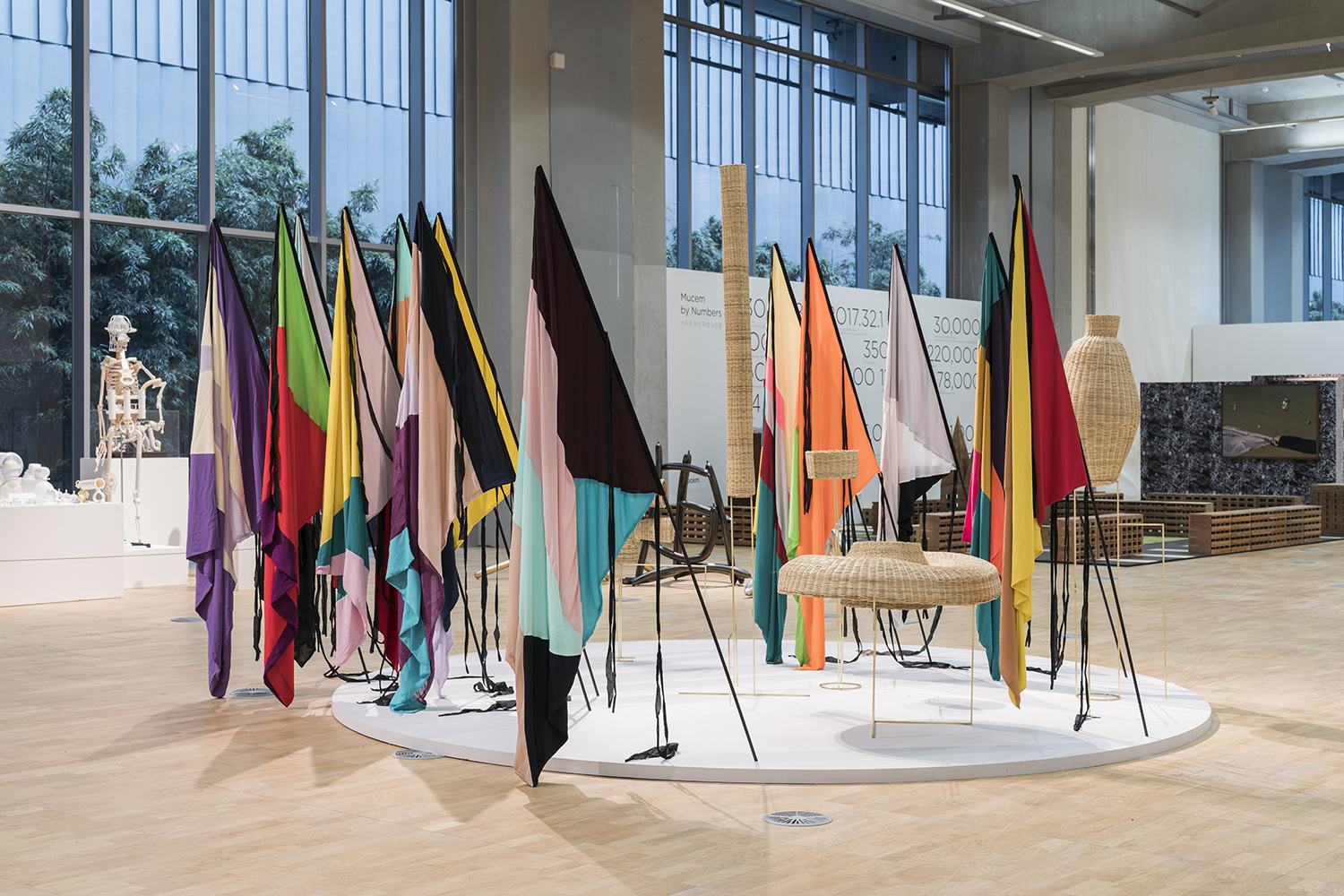
Speaking to global interconnectedness, Japanese artist Asako Shiroki’s Liquid Path—Buoyancy and Dynamic consists of three chairs that supports a gigantic wooden hoop with other objects—such as glass panes and stones—arranged seemingly randomly along the ring. A large swath of cool blue fabric is tied at both ends. Inspired by naval voyages that connect countries and civilizations across the Mediterranean Sea, Shiroki’s poetic installation recalls her impression of Marseille’s seascape, and exists as the artist’s representation of how journeys across waters can bring people together. Tapping into the same idea of cross-pollination between cultures was Paris-based Korean artist Seulgi Lee’s sculptural installation of palm baskets, which were created in collaboration with artisans in the West African nation Burkina Faso. Fascinated by the basket-weaving methods behind some objects in Mucem’s collection, the artist had requested the craftsmen to use the weaving methods and shapes from Southeast Asia, South America and other regions of Africa, creating what she calls “abstract monsters” that are native to nowhere.


Other parts of the exhibition used Mucem’s collection as a springboard to share personal stories and provide social commentary. In one corner was Lee Kit’s Except Death (The Agony Without the Ecstacy). In an enclosed space, a sparse white room divided by thin drywalls was dotted with video projections, loose papers, plastic containers and paintings. Like many of his other works, Except Death brings forth feelings of alienation and loneliness: the video told a tale of an individual who had hidden his or her secrets within a plastic container, only to forget what was in it later. In this air of melancholy, conflicting sensations of abandonment and intimacy play out. As with Lee, an oblique sense of displacement looms large in Taiwanese artist Luo Jr-shin’s multi-sensorial piece In Budding, in Blooming, in Withering, which disconcertingly documents archival materials from the war on AIDS in the 1980s, pasted onto mirrors, each paired with a small vase of flowers that scent the air.
Perhaps the most deceptively naïve piece in the show was Singapore artist Chun Kaifeng’s installation The Measure of All Things (Weary Smile), which uses the length of Chun’s smile and a cigarette butt as a unit of measurement for seemingly random objects. His work and abstracted language form a subversive criticism of how some utilitarian designs—such as our systems of measurements—are social conventions, and bring the psychological dissonances within our societies to the fore.
From time to time, there are exhibitions that set up curatorial parameters that seem far-fetched—the wording, too laborious; the underlying idea, strained and vague. In an era when the outdated term “Orient” no longer posses ontological stability, and the division between “East” and “West” are increasingly blurred in everyday life, the curatorial premise—to provide alternative readings on “folklores, traditions, exotic tastes” other than one’s own—was thin. However, the show did achieve its goal of moving away from the pervasive postcolonial and neoliberal critiques that saturate contemporary art today, tying together an introspective presentation that reflected the personal thoughts, practices and politics of individual artists, with open-ended questions and fantasies abound.

“The Other Face of the Moon” is on view at the Asia Culture Center, Gwangju, until February 4, 2018.





